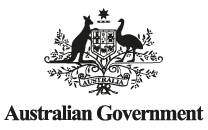Biosecurity is a shared responsibility between Australian and state/territory governments and industry and individuals. The Department of Agriculture and Water Resources (the department) implements many of its responsibilities under the Biosecurity Act 2015 by entrusting industry participants with the performance of specific biosecurity functions through different types of approved arrangements.
This responsibility places legislative obligations on the biosecurity industry participant approved to operate an approved arrangement. In turn, the department has an obligation to the Australian public to verify that the biosecurity industry participant is meeting their biosecurity responsibilities. The introduction of exotic pests and diseases to Australia could have serious consequences for the Australian community, environment and economy.
On 15 June 2018 the Minister requested the Inspector-General to consider a review assessing the effectiveness of the department’s system of approved arrangements under the Biosecurity Act 2015, their ability to manage biosecurity risks, and what if any improvements should be made.
Background
An approved arrangement (AA) is a voluntary legislative arrangement for a person or company (or other body corporate) to carry out specified activities to manage the biosecurity risks associated with imported goods.
Under the Biosecurity Act 2015 imported goods are subject to biosecurity control, and require assessment and often some form of intervention to manage assessed biosecurity risks. Intervention includes: inspection, sampling, testing, isolation/containment, treatment or processing.
The department works with industry participants to carry out much of this assessment and risk-based intervention, through a structured set of arrangements approved under legislation within which goods are assessed for biosecurity risks, and goods that present similar risks or require similar intervention can be handled at places approved under known and consistent sets of requirements. These sets of requirements for assessments and interventions are administratively titled ‘classes’ of approved arrangements.
Until June 2016, the Quarantine Act 1908 provided for the department to:
- enter into a Compliance Agreement (CA) whereby another party could undertake particular procedures in respect of goods, and upon assurance being given, the department could release those goods. At 16 June 2016 there were about 800 CAs, mainly broker arrangements.
- approve a place (Quarantine Approved Premises or QAP) where specified classes of goods subject to quarantine could be dealt with, and the occupier could deal with those goods according to approved conditions. At 16 June 2016 there were about 2500 QAPs.
The Biosecurity Act 2015 provides for approved arrangements (Aas), which replaced both QAPs and CAs. The department is currently managing around 3700 AAs. These are not legislatively tied to a physical location and can cover any biosecurity activity. They are divided into classes based on different types of biosecurity functions which they provide.
Scope of review
The scope of this review covers the Department of Agriculture and Water Resources’ activities with approved industry participants to deliver effective risk-based biosecurity outcomes to the Australian Government. This may include a review of the department’s:
- governance of the current system of AAs, including:
- processes for AA approvals, variations, suspensions/ revocations,
- process of fit-and-proper person testing,
- compliance (monitoring/auditing) activities including enforcement, such as administrative sanctions and prosecutions,
- effectiveness in classifying and managing different biosecurity functions through AAs, including:
- scope and categorisation of AAs into various classes/sub-classes,
- purpose and types of requirements for different types of AAs (i.e. physical and procedural)
- specific technical oversight of certain classes of AAs, and
- training and accreditation of personnel and working groups
- oversight of the performance of and potential improvements in biosecurity risk management by key classes of AAs, including:
- reviewing the effectiveness of AAs and compliance with biosecurity requirements
- reporting and resolution of biosecurity and non-compliance incidents
- information-gathering, surveillance and intelligence activities to inform collaborative biosecurity risk management,
- communication strategy and policy for internal and external stakeholders.
Out of scope
This review will not examine policy and activities that are the responsibility of stakeholders—other than the Department of Agriculture and Water Resources—including state/territory governments, individuals and biosecurity industry participants.
Contact
If you wish to discuss this review you can contact the Inspector-General as below:
Email: inspgenbiosecurity@agriculture.gov.au
Phone: +61 2 8334 7409





